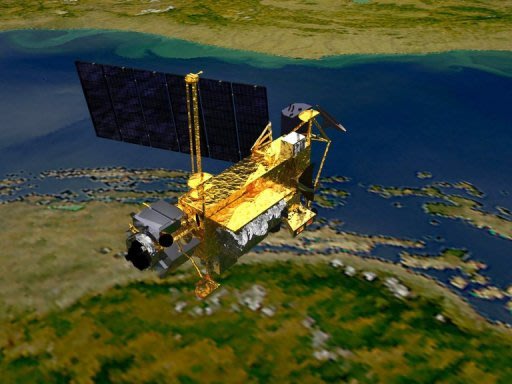Twenty years ago, NASA launched the Upper Atmosphere Research Satellite (UARS) from the Space Shuttle Discovery. The satellite finished its mission several years ago, but after its work was done, it took some time off, and has remained floating in space. But its hiatus ends any moment now, astronomers predict. After more than 7,000 days soaring above the Earth, UARS is coming home. Just don't expect to find it all in one piece.
Sometime during the evening of September 23 or the early morning of September 24, the satellite is expected to re-enter the atmosphere and fall back to Earth. According to NASA's official site, "the spacecraft will break into pieces during re-entry," however "not all of it will burn up in the atmosphere."
But don't go building an underground bunker. NASA is quick to note that the likelihood of debris harming either person or property is "extremely small." Since the late 1950s, there is no record of any falling space object producing significant property damage or causing injury.
But such reminders haven't slowed the public's frantic interest. Over the past 24 hours, web searches for "nasa satellite" and "uars satellite" have skyrocketed. Related lookups for "uars tracking" and "live tracking uars satellite" are also extremely popular, as are searches for "uars dimensions." According to NASA, the satellite is 35 feet long and weighs 13,000 pounds.
The satellite's main purpose, according to the official NASA site, was to "observe numerous chemical constituents of the atmosphere with a goal of better understanding atmospheric photochemistry and transport." The UARS was particularly useful in helping to answer questions surrounding the the loss of the ozone layer above the Arctic.
The best place to keep track of the falling satellite's progress is at NASA.gov. The government agency is doing all it can to keep concerned parties updated on when and where the satellite is projected to land. You can check out NASA's official site for updates.

![Validate my Atom 1.0 feed [Valid Atom 1.0]](valid-atom.png)
























































